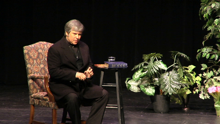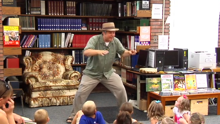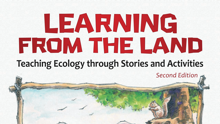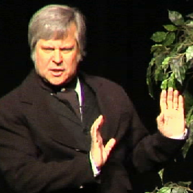Brian “Fox” Ellis is part Cherokee and has studied with native Elders from several tribes. He has performed at Powwows and Native Gatherings across Turtle Island. In recent years he was invited to perform at the Apple River Fort for their commemoration of the Black Hawk War and for a group of Sauk and Fox Elders at the Black Hawk Museum in Rock Island. He has presented at the Trail of Tears Museum in the foothills of The Smokey Mountains and at the Assiniboine Reservation for a conference on Seeing the Prairie Through Native Eyes. The following programs give voice to the Native American view of American History, including much that is left out of your history books.
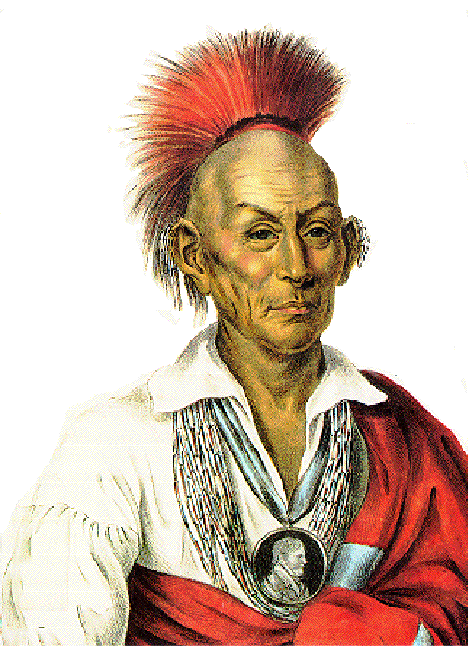
Black Hawk’s View of American History - Imagine sitting around a campfire with Ma-ka-tai-me-she-kiuk-kiuk, listening to the stories of creation and the legends of his grandfathers. Drawing from Black Hawk’s Autobiography and his knowledge of American Indian Cosmology, Fox portrays the reporter who transcribed and published Black Hawk’s life story. Fox weaves true history with folklore to create a tapestry of symbolic language that draws the audience into the world view of this respected leader of his people. There are traditional chants and drumming songs, including a chance for the audience to participate in a few social dances.
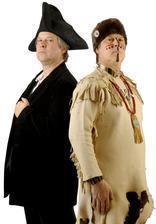 Two Faces of Illinois’ History: A Conversation with Ninian Edwards and Chief Gomo: 200 years ago Ninian Edward’s men burned the French Village of Peoria and Gomo rescued the French women and children left behind. We commemorate the burning of Peoria in the War of 1812. Spend an hour with two of the most pivotal and dynamic personalities in Illinois History. First meet Illinois’ Territorial Governor Ninian Edwards as he speaks on his role in The War of 1812, the burning of Peoria, and the Cahokia Council with the Indians. Then hear Pottawatomie Chief Gomo as he shares his side of the story in the rescue of the French women and children of Peoria, his relationships with the other principal chiefs of this region, including Black Partridge, Tecumseh and The Prophet, and his speech responding to the Governor. Much of the text is taken directly from the speeches these two men delivered to each other as they squared off to determine the future of this region. Storyteller, Brian” Fox” Ellis steps into each of their shoes to bring to life a controversial story in this vital moment in the birthing of Illinois. This program explores American History unvarnished and promises to inspire a lively discussion!
Two Faces of Illinois’ History: A Conversation with Ninian Edwards and Chief Gomo: 200 years ago Ninian Edward’s men burned the French Village of Peoria and Gomo rescued the French women and children left behind. We commemorate the burning of Peoria in the War of 1812. Spend an hour with two of the most pivotal and dynamic personalities in Illinois History. First meet Illinois’ Territorial Governor Ninian Edwards as he speaks on his role in The War of 1812, the burning of Peoria, and the Cahokia Council with the Indians. Then hear Pottawatomie Chief Gomo as he shares his side of the story in the rescue of the French women and children of Peoria, his relationships with the other principal chiefs of this region, including Black Partridge, Tecumseh and The Prophet, and his speech responding to the Governor. Much of the text is taken directly from the speeches these two men delivered to each other as they squared off to determine the future of this region. Storyteller, Brian” Fox” Ellis steps into each of their shoes to bring to life a controversial story in this vital moment in the birthing of Illinois. This program explores American History unvarnished and promises to inspire a lively discussion!
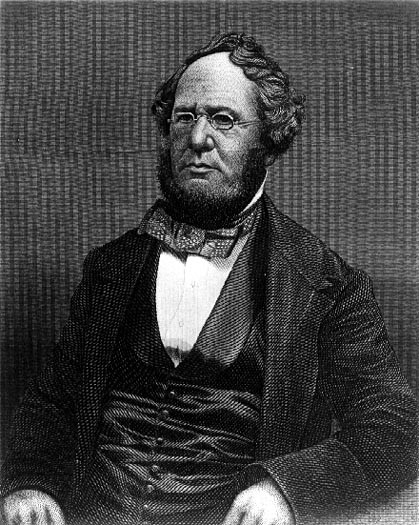 Indian Legends with Henry Rowe Schoolcraft: Spend an afternoon in the parlor of this consummate storyteller and poet as he shares tales of the Ojibwa. He lived among the American Indians in Northern Michigan in the early 1800's. Schoolcraft was one of the first to make a comprehensive effort to collect folktales from the tribes he worked with. He also married a Chippewa woman. Longfellow’s Hiawatha was plagiarized from Schoolcraft’s scholarship. Like Lewis and Clark, Colonel Zebulon Pike, and the Long Expedition, Schoolcraft was hired by the US Government to conduct extensive geological and natural history surveys of the west including explorations the lower region of the Louisiana Purchase and an ecological survey of the Illinois Valley in 1834. Schoolcraft also discovered and named Lake Itasca, the ‘true head' of the Mississippi.
Indian Legends with Henry Rowe Schoolcraft: Spend an afternoon in the parlor of this consummate storyteller and poet as he shares tales of the Ojibwa. He lived among the American Indians in Northern Michigan in the early 1800's. Schoolcraft was one of the first to make a comprehensive effort to collect folktales from the tribes he worked with. He also married a Chippewa woman. Longfellow’s Hiawatha was plagiarized from Schoolcraft’s scholarship. Like Lewis and Clark, Colonel Zebulon Pike, and the Long Expedition, Schoolcraft was hired by the US Government to conduct extensive geological and natural history surveys of the west including explorations the lower region of the Louisiana Purchase and an ecological survey of the Illinois Valley in 1834. Schoolcraft also discovered and named Lake Itasca, the ‘true head' of the Mississippi.
Prince Maximilian and Karl Bodmer: Touring the Wilderness of North America: Join the Prince of Wied, Maximilian, as he takes you on a tour of North America as he saw it in 1832-34. Using Karl Bodmer’s illuminating illustrations, Prince Maximilian will escort the audience on an adventure from the Grand Banks of Newfoundland to the Great Falls of the Missouri River, from New Harmony, Indiana to New Orleans, Louisiana. Travel with this intrepid explorer to meet America’s best scientific minds, explore the West in the wake of Lewis and Clark, and participate in traditional American Indian drumming songs. Storyteller and author Brian “Fox” Ellis steps into the shoes of Prince Maximilian allowing the audience to step back in time. Much of the text for this performance comes directly from his journals. The backdrop includes the landscapes, portraits, and scenes from everyday life painted by Karl Bodmer.
Tribal Tales from the Rivers Edge: Before ethnology was a scientific discipline, Lewis and Clark collected stories, songs, and artifacts from the dozens of distinct cultures they encountered in their journey west. They kept detailed notes on tribal customs and collected vocabulary to create a rough outline of a dictionary of Indian Languages. In this dynamic performance, Fox shares both folklore and true history from the American Indians met along the way. The audience sees something of the transformation of the Corps of Discovery as they adapted to Native American life ways and they hear about life before the white man came. Not once, but several times, the journey would have failed if not for the kindness of Native Americans.
